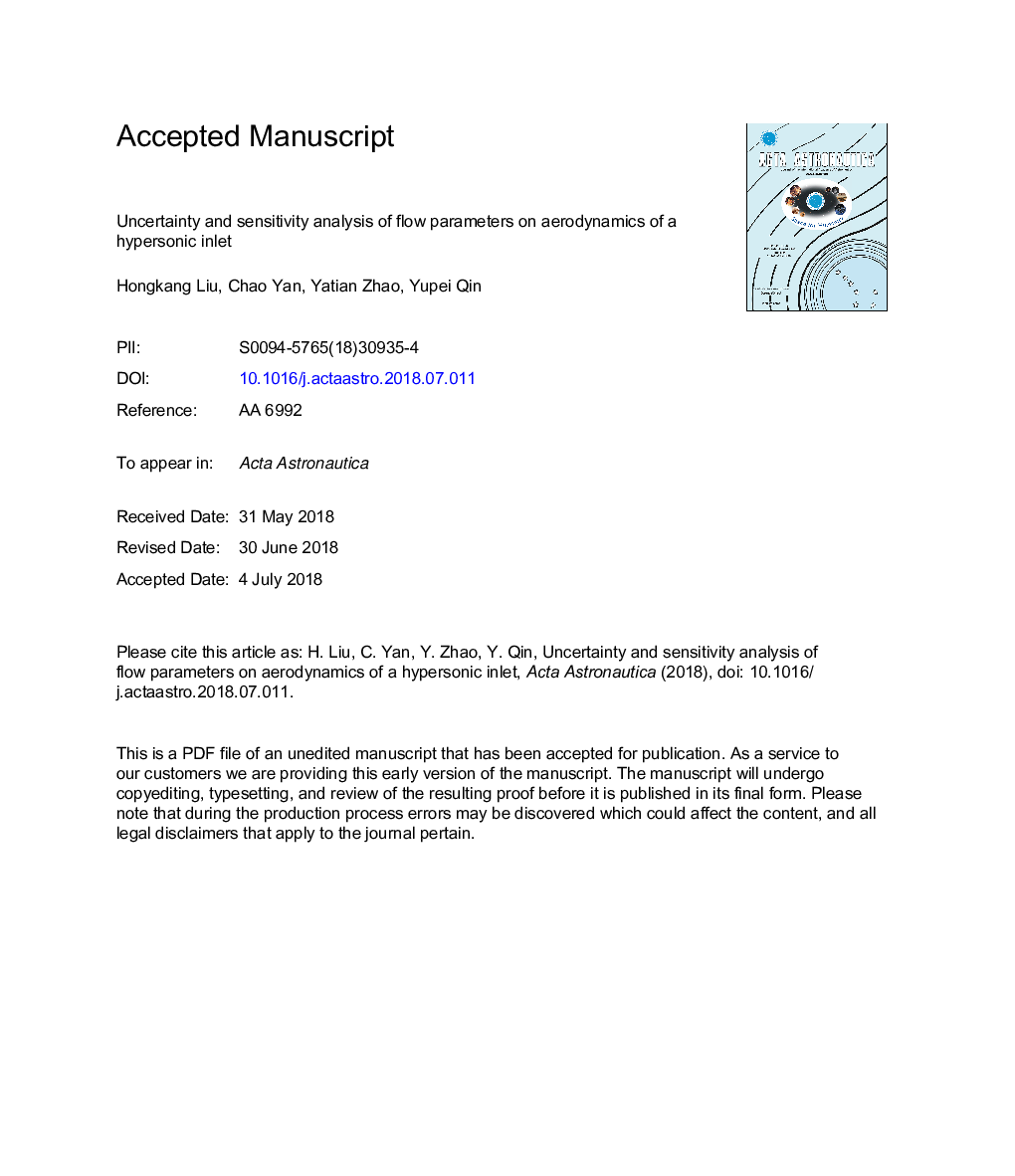| Article ID | Journal | Published Year | Pages | File Type |
|---|---|---|---|---|
| 8055444 | Acta Astronautica | 2018 | 23 Pages |
Abstract
The performance of the inlet is crucial to the cruise flight of a hypersonic air-breathing propulsion vehicle. The objective of this work is to investigate the uncertainty and sensitivity of pressure field and the performance parameters for a hypersonic inlet due to the uncertainty of five flow parameters, including freestream Mach number, Reynolds number, angle of attack, temperature and wall temperature. The steady Reynolds Averaged Navier-Stokes equations are solved to predict the inlet start and unstart flows within the hysteresis loop. Then, a point-collocation non-intrusive polynomial chaos method (NIPC) is utilized to quantify the uncertainty and sensitivity in the output quantities of interest. The uncertainty analysis in pressure field shows that Mach number and angle of attack of freestream make dominant contributions to the total uncertainty, and the Mach number has remarkable impacts in the isolator. In the start flow, the angle of attack exerts its prominent influence in the post-shock regions, while Mach number mainly dominates these regions ahead of and around the shocks. The reason may be interpreted as the much greater pressure derivatives with respect to angle of attack in the post-shock regions. Significant discrepancies are presented for the unstart flow. The reflected shock waves in the unstart flow are less sensitive to the variations of flow parameters. The external flow field, separation bubble and reflected shocks are significantly affected by angle of attack. Besides, the uncertainties of the performance parameters in the start flow are about twice those in the unstart flow. The sensitivity analysis further reveals that Mach number is the major contributor to the total uncertainty of performance parameters. The correlation coefficients via linear regression method clearly illustrate the relationships between the five input parameters and the performance parameters.
Related Topics
Physical Sciences and Engineering
Engineering
Aerospace Engineering
Authors
Hongkang Liu, Chao Yan, Yatian Zhao, Yupei Qin,
